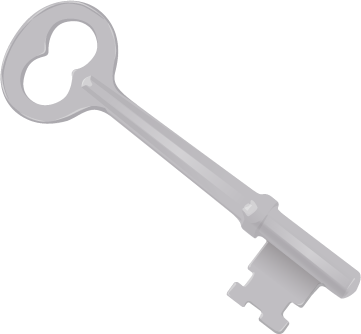The printable version is no longer supported and may have rendering errors. Please update your browser bookmarks and please use the default browser print function instead.
Spherically Symmetric Configurations Synopsis

|
|
Spherically Symmetric Configurations that undergo Adiabatic Compression/Expansion — adiabatic index, <math>~\gamma</math>
|
|
<math>~dV = 4\pi r^2 dr</math>
|
and
|
<math>~dM_r = \rho dV ~~~\Rightarrow ~~~M_r = 4\pi \int_0^r \rho r^2 dr</math>
|
|
<math>~W_\mathrm{grav}</math>
|
<math>~=</math>
|
<math>~- \int_0^R \biggl(\frac{GM_r}{r}\biggr) dM_r ~~ \propto ~~ R^{-1}</math>
|
|
<math>~U_\mathrm{int}</math>
|
<math>~=</math>
|
<math>~\frac{1}{(\gamma -1)} \int_0^R 4\pi r^2 P dr ~~ \propto ~~ R^{3-3\gamma}</math>
|
|
|
Equilibrium Structure
|
|
Detailed Force Balance
|
Free-Energy Analysis
|
|
Given a barotropic equation of state, <math>~P(\rho)</math>, solve the equation of
Hydrostatic Balance
|

|
<math>~\frac{dP}{dr} = - \frac{GM_r \rho}{r^2}</math>
|
for the radial density distribution, <math>~\rho(r)</math>.
|
|
The Free-Energy is,
|
<math>~\mathfrak{G}</math>
|
<math>~=</math>
|
<math>~W_\mathrm{grav} + U_\mathrm{int} + P_eV</math>
|
|
|
<math>~=</math>
|
<math>~-a R^{-1} + bR^{3-3\gamma}+ cR^3 \, .</math>
|
Therefore, also,
|
<math>~\frac{d\mathfrak{G}}{dR}</math>
|
<math>~=</math>
|
<math>~aR^{-2} +(3-3\gamma)bR^{2-3\gamma} + 3cR^2</math>
|
|
|
<math>~=</math>
|
<math>~\frac{1}{R}\biggl[ -W_\mathrm{grav} - 3(\gamma-1)U_\mathrm{int} + 3P_eV\biggr]</math>
|
Equilibrium configurations exist at extrema of the free-energy function, that is, they are identified by setting <math>~d\mathfrak{G}/dR = 0</math>. Hence, equilibria are defined by the condition,
|
<math>~0</math>
|
<math>~=</math>
|
<math>~W_\mathrm{grav} + 3(\gamma-1)U_\mathrm{int} - 3P_eV\, .</math>
|
|
| Virial Equilibrium |
|
Multiply the hydrostatic-balance equation through by <math>~rdV</math> and integrate over the volume:
|
<math>~0</math>
|
<math>~=</math>
|
<math>~-\int_0^R r\biggl(\frac{dP}{dr}\biggr)dV - \int_0^R r\biggl(\frac{GM_r \rho}{r^2}\biggr)dV</math>
|
|
|
<math>~=</math>
|
<math>~-\int_0^R 4\pi r^3 \biggl(\frac{dP}{dr}\biggr) dr - \int_0^R \biggl(\frac{GM_r}{r}\biggr)dM_r</math>
|
|
|
<math>~=</math>
|
<math>~-\int_0^R\biggl[ \frac{d}{dr}\biggl( 4\pi r^3P \biggr) - 12\pi r^2 P\biggr] dr + W_\mathrm{grav}</math>
|
|
|
<math>~=</math>
|
<math>~\int_0^R 3\biggl[ 4\pi r^2 P \biggr]dr - \int_0^R \biggl[ d(3PV)\biggr] + W_\mathrm{grav}</math>
|
|
|
<math>~=</math>
|
<math>~3(\gamma-1)U_\mathrm{int} + W_\mathrm{grav} - \biggl[ 3PV \biggr]_0^R \, .</math>
|
|
|
|
Stability Analysis
|
|
Perturbation Theory
|
Free-Energy Analysis
|
|
Given the radial profile of the density and pressure in the equilibrium configuration, solve the eigenvalue problem defined by the,
LAWE: Linear Adiabatic Wave (or Radial Pulsation) Equation
|
<math>~0</math>
|
<math>~=</math>
|
<math>~
\frac{d}{dr}\biggl[ r^4 \gamma P ~\frac{dx}{dr} \biggr]
+\biggl[ \omega^2 \rho r^4 + (3\gamma - 4) r^3 \frac{dP}{dr} \biggr] x
</math>
|
to find one or more radially dependent, radial-displacement eigenvectors, <math>~x \equiv \delta r/r</math>, along with (the square of) the corresponding oscillation eigenfrequency, <math>~\omega^2</math>.
|
The second derivative of the free-energy function is,
|
<math>~\frac{d^2 \mathfrak{G}}{dR^2}</math>
|
<math>~=</math>
|
<math>~
-2aR^{-3} + (3-3\gamma)(2-3\gamma)b R^{1-3\gamma} + 6cR
</math>
|
|
|
<math>~=</math>
|
<math>~\frac{1}{R^2}\biggl[
2W_\mathrm{grav} - 3(\gamma-1)(2-3\gamma)U_\mathrm{int} + 6P_e V
\biggr] \, .
</math>
|
Evaluating this second derivative for an equilibrium configuration — that is by calling upon the (virial) equilibrium condition to set the value of the internal energy — we have,
|
<math>~3(\gamma-1)U_\mathrm{int}</math>
|
<math>~=</math>
|
<math>~3P_e V - W_\mathrm{grav} </math>
|
|
<math>~\Rightarrow~~~ R^2 \biggl[\frac{d^2\mathfrak{G}}{dR^2}\biggr]_\mathrm{equil}</math>
|
<math>~=</math>
|
<math>~2W_\mathrm{grav} - (2-3\gamma)\biggl[3P_e V - W_\mathrm{grav} \biggr] + 6P_e V
</math>
|
|
|
<math>~=</math>
|
<math>~(4-3\gamma)W_\mathrm{grav} + 3^2\gamma P_e V \, .
</math>
|
|
|
Variational Principle
|
|
Multiply the LAWE through by <math>~4\pi x dr</math>, and integrate over the volume of the configuration gives the,
Governing Variational Relation
|
<math>~0</math>
|
<math>~=</math>
|
<math>~
\int_0^R 4\pi r^4 \gamma P \biggl(\frac{dx}{dr}\biggr)^2 dr
- \int_0^R 4\pi (3\gamma - 4) r^3 x^2 \biggl( \frac{dP}{dr} \biggr) dr
</math>
|
|
|
|
<math>~
- 4\pi \biggr[r^4 \gamma Px \biggl(\frac{dx}{dr}\biggr) \biggr]_0^R
- \int_0^R 4\pi \omega^2 \rho r^4 x^2 dr \, .
</math>
|
|
|
<math>~=</math>
|
<math>~
\int_0^R x^2 \biggl(\frac{d\ln x}{d\ln r}\biggr)^2 \gamma 4\pi r^2P dr
- \int_0^R (3\gamma - 4)x^2 \biggl( - \frac{GM_r}{r} \biggr) 4\pi \rho r^2 dr
</math>
|
|
|
|
<math>~
+ \biggr[\gamma 4\pi r^3 Px^2 \biggl(-\frac{d\ln x}{d\ln r}\biggr) \biggr]_0^R
- \int_0^R 4\pi \omega^2 \rho r^4 x^2 dr \, .
</math>
|
Now, by setting <math>~(d\ln x/d\ln r)_{r=R} = -3</math>, we can ensure that the pressure fluctuation is zero and, hence, <math>~P = P_e</math> at the surface, in which case this relation becomes,
|
<math>~\omega^2</math>
|
<math>~=</math>
|
<math>~
\frac{\gamma (\gamma -1) \int_0^R x^2 \bigl(\frac{d\ln x}{d\ln r}\bigr)^2 dU_\mathrm{int}
- \int_0^R (3\gamma - 4)x^2 dW_\mathrm{grav}
+ 3^2 \gamma x^2 P_eV}{ \int_0^R x^2 r^2 dM_r}
</math>
|
|
|
Approximation: Homologous Expansion/Contraction
|
|
If we guess that radial oscillations about the equilibrium state involve purely homologous expansion/contraction, then the radial-displacement eigenfunction is, <math>~x</math> = constant, and the governing variational relation gives,
|
<math>~\omega^2 \int_0^R r^2 dM_r</math>
|
<math>~\approx</math>
|
<math>~
(4- 3\gamma) W_\mathrm{grav}+ 3^2 \gamma P_eV \, .
</math>
|
|
See Also

